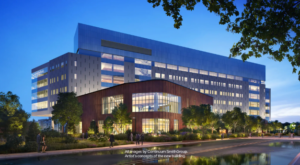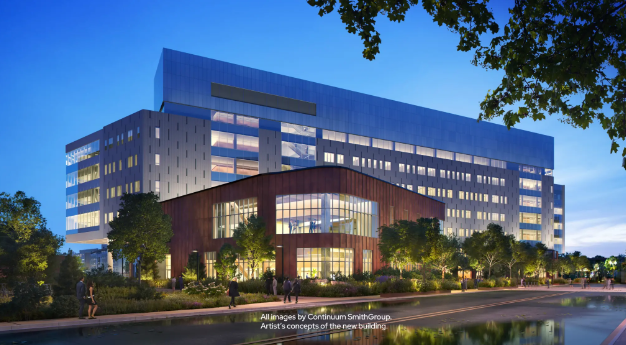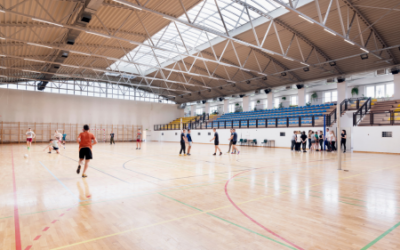Current data continues to indicate significant increases in student enrollments at universities and community colleges throughout the U.S. Community college enrollment was hit especially hard by the effects of the pandemic, but by 2023 a noted increase of 5.3% in student transfers from community colleges to universities had occurred. That trend continues, and these small-sounding percentages should not be discounted because the data equates to thousands of new students for universities to accommodate now and in the near future.
New construction, enhanced research divisions, technology upgrades and classroom expansions are the norm. Energy offerings are also in high demand on university campuses.
The University of Texas at Austin will make a $425 million investment in a new academic building to house the Red McCombs School of Business. Funded through gifts, designated university funds and revenue bonds, the 10-story, 450,000 square-foot facility will house six academic departments’ undergraduate programs.
The new building will include classrooms, offices, spaces for student collaboration, a career center and an event area. An underground parking garage that can accommodate 120 vehicles will also be provided. Design elements call for demolition of the existing Dobie Parking Garage and relocation of current storm water lines and utilities on the site.
The project is currently in the design and planning stage. While no contractor has been chosen for construction, all procurement selections will begin sometime prior to November 2024. The academic building is slated for completion by May 2028.

Rendering of the UW-Madison engineering building. Courtesy of Continuum SmithGroup and the College of Engineering at UW-Madison.
The University of Wisconsin-Madison will get a new $347 million engineering building on campus. The new facility will be designed to accommodate an additional 1,000 undergraduate engineering students. It will also be designed to represent the centerpiece of the seven-building engineering campus. Construction of an eight-story, 395,000 square-foot facility with spaces dedicated to research and engineering education will be incorporated with both indoor and outdoor gathering spaces. The design will focus on sustainability and energy efficiency gained through rooftop solar energy-harvesting technology. The building’s learning wing will use mass timber construction and a green roof to manage stormwater and mitigate the urban heat island effect. Inside space will be designed so it can be adapted and reconfigured for maximum flexibility in the coming decades. State-of-the-art technology will be included, and construction is expected to begin in 2025.
Officials at the Georgia Institute of Technology (Georgia Tech) have authorized the design phase of a $117 million project to deliver a new residence hall on its campus in Atlanta. The new building will provide approximately 200,000 square feet of space and be designed to accommodate 850 beds arranged in double-occupancy rooms. The residence hall will be outfitted with resident amenities, including group kitchens, learning and study areas, and community lounges. The design may include gathering spaces on the roof of the building as well. Georgia Tech is planning for this residence hall to meet the campus’ student housing needs for the next 10 years. Located along the west edge of Georgia Tech’s campus, it will be the first new housing constructed on campus for Georgia Tech undergraduates since 2005.
Three aging student housing dorms on the campus of the University of Montana in Missoula will soon be demolished. The campus’ three student dorms are worn out after decades of use. One new resident hall of about $100 million will consolidate all three. The plan calls for construction of the building before demolition begins on the other older facilities. University officials assessed the cost of continued deferred maintenance and critical upgrades required for the old buildings and realized the new construction would be less than continued use of the outdated facilities. The new residence hall will be located on the southwest end of campus. It is currently in the design phase, and bidding for construction services is planned for May of this year. Officials hope to break ground in August. Construction is anticipated to take 30 months.
The Florida International University Board of Trustees very recently approved plans for a $185 million residence hall at that will be located on the Modesto Maidique Campus in Miami. It will resolve the problem of very limited on-campus housing, which has resulted in 7% of students living on campus and more than 800 students requesting on-campus housing.
The new residence hall will have 816 beds and will be located near the existing Tamiami Residence Hall. The effort will be funded by university revenue bonds and housing reserves. Construction will start in late 2025. The Board of Trustees has also approved construction of a $12 million dining facility on campus. It will accommodate numerous food venues, stay open late for students and seat upwards of 250 students at a time. Construction on the dining hall is set to begin during the 2025 spring semester.
The University of Wisconsin-Whitewater’s Winther and Heide halls are scheduled for a $60 million renovation to address the aging infrastructure of Winther Hall and add entry way additions to both Winther and Heide Halls. Originally constructed in 1969, Winther Hall will receive a roof replacement, new elevators and more than 200 added windows throughout the facility. Classrooms, lecture halls and laboratories are currently being redesigned for expansion and the installation of new modern technologies. Other project components include replacements of the HVAC and the mechanical and plumbing systems.
The design and planning process for the Winther and Heide Hall Renovation began in January of this year. Construction is scheduled for late 2025, with a goal of the renovation being completed in 2028.
Most university and college campuses throughout America have aging and inefficient facilities. They also need new technology on all campuses and immediate upgrades designed to make the institutions more attractive to students now that so many are attempting to gain acceptance to higher education institutions. Modernized technology, projects that reduce costs such as district energy systems and upgraded living and dining facilities are universally in high demand.







